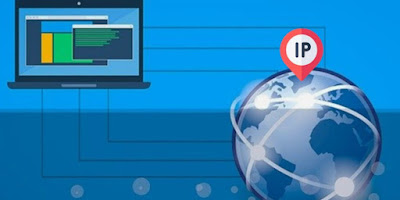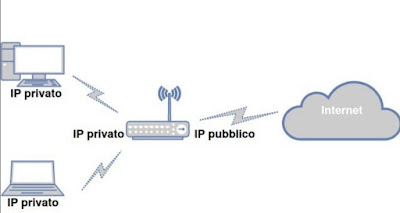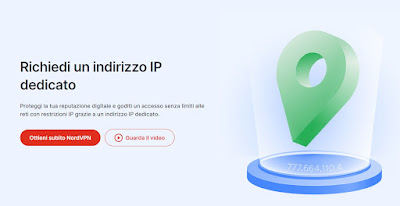What it means to navigate with a static IP address, what it is for, how it is assigned and what advantages it has
 In home networks, the router assigns a new IP address automatically when a device connects to the network or if there are configuration changes. To the user, having one IP or another does not change anything in the speed of the internet and in the functionality of the applications.
In home networks, the router assigns a new IP address automatically when a device connects to the network or if there are configuration changes. To the user, having one IP or another does not change anything in the speed of the internet and in the functionality of the applications.When we talk about static IP instead we want this network address to never change: in this way our PC will always have the same IP address and it will not be assigned to anyone else on the network. Let’s see together what is static ip and how to configure it both on internal network and external ip addressso as to satisfy the most diverse needs.
READ ALSO -> Internet IPv6: what it means and how to activate it
1) What is a static IP

- External IP address: assigned by the provider to our Internet line, it is the same for all devices connected to the same modem or router.
- Internal IP address: Automatically assigned by your modem or router to devices connected to the network.
We must imagine the internet world as a set of routers and computers which are identified by specific IP addresses, but which create many internal subnetworks to which thousands of computers can be connected, each with a different address only within this private network, which however converge all on the same single external IP address.
Private IP addresses cannot be routed across the Internet and they are always the same in every network of the world: 192,168. *. * (where * can be anything) or 10.10.xx For example, the interface of most routers around the world are only accessible from computers inside the network, via the IP address 192.168.0.1.
Computers connected to these routers have internal IP addresses that have values in the range from 192.168.0.2 to 192.168.0.254. The first computer that connects to the router, through the DHCP servicesends a network request saying “I need an IP address, my hardware address is xxxxxx” and it is assigned 192.168.0.2, the next one will have 192.168.0.3 and so on.
All these devices access the Internet with a shared IP addressdifferent from the private one, assigned to the modem/router (which acts as an access point of a network or Gateway) from the internet provider. With some providers (such as Fastweb), even our external IP is actually a node in another private subnet, sharing the external IP even among hundreds of computers located in different areas of the city.
To know your internal IP address just open a command prompt (from the Start menu) and write the command:
ipconfig
To know your external dynamic IP instead you can use an online service like My IPas seen in the guide on how to find another computer’s IP address and locate it.
2) Public or private static IP?

It makes an association between the pc’s hardware addresses (MAC Address) with the internal IP addresses so a given computer always has the same one.
However, all these changes do not concern the external IP, the one that makes us reachable via the Internet; the external IP address is not something you can change and is assigned automatically by the Internet provider.
The external IP address is always public, but it can change each time the modem or router is restarted (dynamic and public external IP); some operators also assign dynamic and private external IPs (Fastweb), so as to reduce the number of IPs assigned to users (who work under a large NAT network).
3) Is static IP paid?

The static public IP is really very useful if you want to create a local Web server (creating an internet site that resides on your PC), for an FTP server (to make files saved on your PC available from anywhere) to configure a radio that broadcasts computer music via the internet or to create a remote surveillance system, to always keep an eye on the webcam footage.
To configure a web server on your home network to be accessible by anyone in the world, you need to forward incoming requests on port 80 for the web server machine; obvious then that if the web server gets a new IP from the router every time, this can’t work.
Therefore, if we have specific needs and we need to always have the same public IP we will have to ask the provider for a static and public external IP address; many operators offer it for free, while others require an additional sum of money for this type of service.
To learn more we can read our guides on how to ask for a free public IP of Fastweb come on how to get a static ip with TIM or other connections.
4) How to get a static address for free

With it we can create a new personal web address and associate it with our external IP address, so that we can always be reached. This address it can also be configured with dynamic IPs: just download a client on the PC able to communicate any change of IP to the service, so as to always be reachable from the outside.
On this type of service we can read our guides on how create a server that is always accessible from the Internet and about how connect to your home PC from anywhere.
5) How to get a static address with a VPN

Operation is really very simple: we download the premium VPN service client, activate the dedicated IP address and start the connection on the client; our PC (or our router) will now be connected to the VPN server, which will always make us visible with the same static IP whatever our starting IP is.
Among the best VPN services that offer static IPs we find NordVPN e CyberGhost.
To learn more about the use of premium VPNs we can read our guide on how to choose a secure vpn that doesn’t spy come on come configurare VPN su Router.
Conclusions
Many users don’t care about the IP address, as long as the modem and device used connects to the Internet and websites open without problems. Those who have a server at home are building a corporate website or have a corporate file server must necessarily get a public and static IPso you always know which address to point to to access your resources.
We can ask the provider for this static IP address (it can also be free but it depends on the provider), use a DDNS service like NO-IP or configure a dedicated, fast and unlimited VPN connection to hide the real personal IP address and go out on the Internet with a totally anonymous static IP address.
If we have problems with internal network IPs we can read our articles on how to fix invalid ip configuration on wifi network come on how to fix if another computer uses the same ip address.
